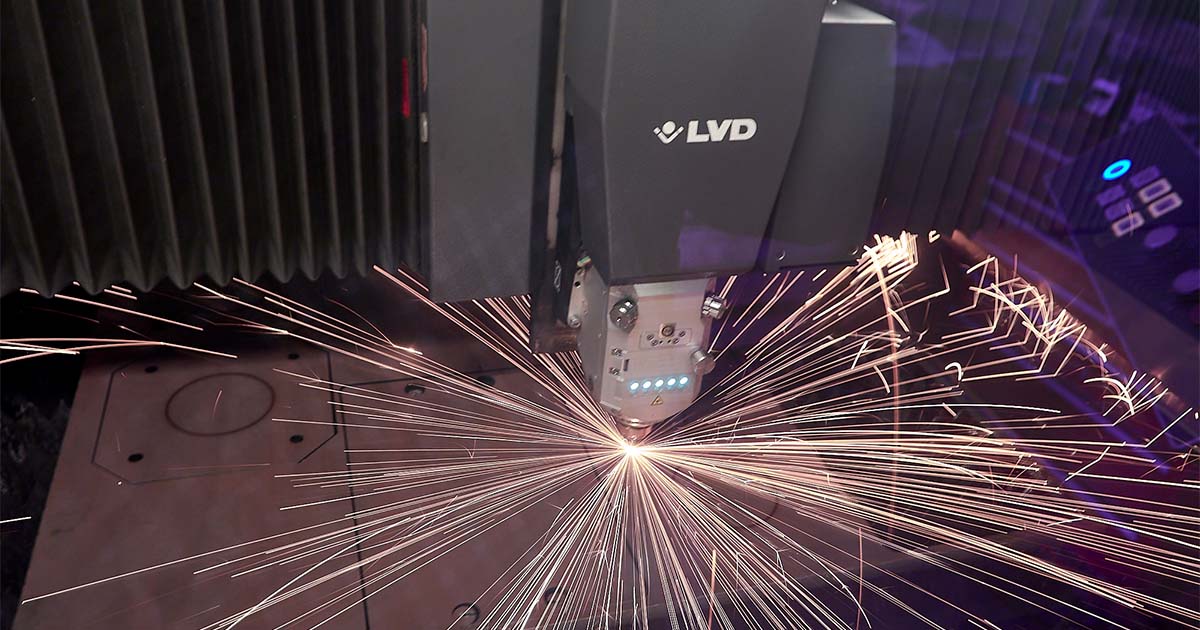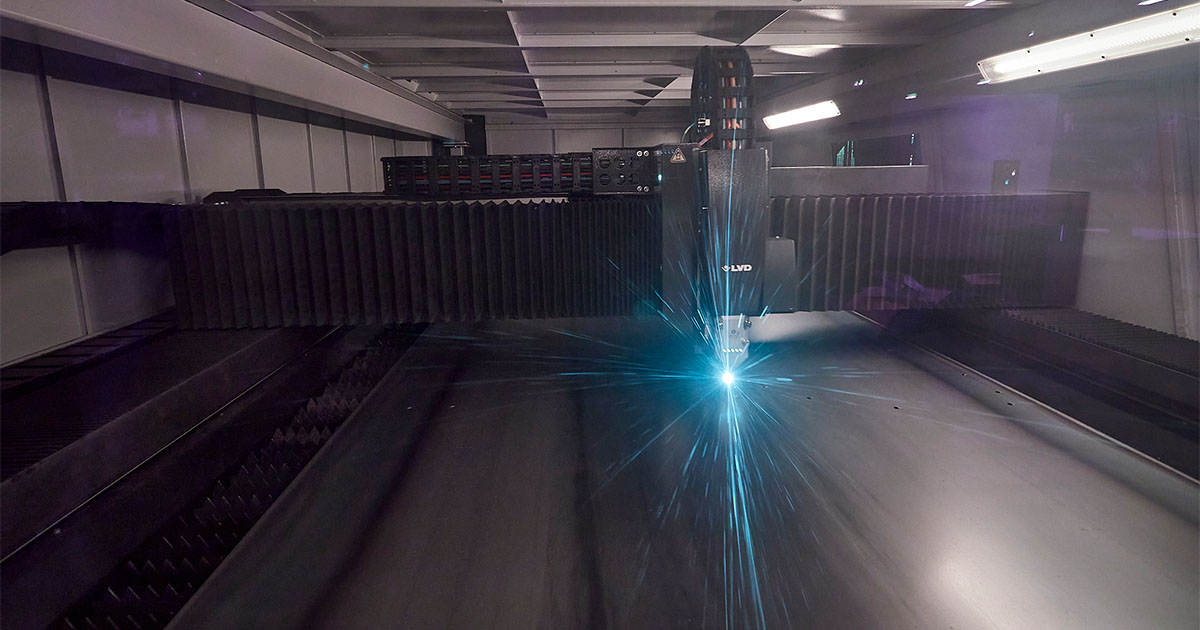
We collect basic website visitor information on this website and store it in cookies. We also utilize Google Analytics to track page view information to assist us in improving our website.
If you’re passionate about metal cutting or just keen to learn more, you’ve landed in the right place.
For over 38 years, Amber Steel has been at the forefront of metal cutting services, specializing in laser cutting, flame cutting, and plasma cutting. Our expertise has carved a niche in this cutting-edge industry, delivering precision and excellence across industrial projects big and small.
In our blog, we’ll share a mix of useful tips, innovative applications, our thoughts on sustainability in steel cutting, and more. Expect stories from the cutting floor, insights into how our processes can streamline projects across industries, and a few lessons we’ve learned along the way.
While we keep some of our trade secrets under wraps, this blog is designed to offer valuable nuggets of wisdom that you simply won't find anywhere else. Whether you’re a professional in the industry or someone fascinated by the possibilities of metal cutting, you'll find something of value here.
So, stick with us as we delve into the finer points of metal work. We’re glad to share our insights and lead discussions that matter to our industry.
How precision metal cutting propels the aerospace industry, from constructing lighter frames to enhancing aerodynamics.
The role of advanced metal cutting in automotive manufacturing, driving innovations in vehicle design and efficiency.
All about the robust and versatile process of flame cutting, ideal for tackling thicker metals with precision and ease.
Discover the art of crafting metal furniture, where cutting techniques meet design to create both functional and aesthetic pieces.
A behind-the-scenes look at the mechanics of metal cutting technologies and the science that makes them tick.
Laser cutting is where extreme precision meets efficiency, allowing for intricate designs and clean finishes.
The critical role of precise steel cutting in developing reliable and intricate medical devices.
How steel cutting supports the oil and gas industry with components that withstand extreme environments and pressures.
Known for its speed and versatility, plasma cutting slices through conductive metals with hot plasma.
Safety first! Tips and insights on maintaining a safe environment while handling powerful metal cutting equipment.
The backbone of construction, where steel fabrication and cutting technologies create frameworks that shape skylines.
Sustainability
A look at sustainability in metal cutting, focusing on practices that reduce waste and conserve energy to protect our planet.

In the automotive industry, innovation is crucial for staying ahead and producing accurate results. As the industry evolves, a revolutionary method in automotive OEM production is laser blanking–a cutting-edge process offering unparalleled precision and flexibility.
Amber Steel is a leading metal-cutting provider specializing in providing the best solutions for your manufacturing needs. In this blog, our experts explore how laser blanking technology transforms automotive OEM production, saving time and costs while going above the demands of modern vehicle manufacturing.
Laser blanking is a modern approach to manufacturing where a laser is implemented by cutting flat pieces of metal, known as blanks, to create precise shapes and sizes. Traditional blanking methods typically use mechanical punches and dies. With this innovation, laser blanking uses computer systems that guide laser beams to make intricate and accurate cuts in automotive OEM production.
Laser blanking technology was first introduced in the early 1970s in the metalworking industry. At the start, lasers were first mounted to oxy-fuel cutting machines. With time and further adjustments, the potential of laser blanking quickly became evident.
Here is a breakdown of the evolution of laser blanking throughout history:
1970s: The 500-watt CO2 laser was introduced, creating the beginning of laser technology in metalworking. Even though early applications were limited, laser technology still proved useful in cutting complex shapes, which revolutionized the way sheet metal was fabricated.
1990s: During this period, the concept of laser blanking became known globally. Many companies started adopting this new technology into their manufacturing processes and began replacing traditional blanking presses with coil-fed laser cutting systems. The workings of modern laser blanking led to enhanced efficiency and flexibility.
2000s: With new advancements, fiber laser technology was introduced which significantly increased the speed of laser blanking. High-brightness fiber lasers created faster cutting speeds and meticulous cuts, making laser blanking the most viable option for mechanical stamping presses.
Initial Experiments: At first, lasers were integrated into previous existing cutting machines to provide precision and accuracy with more traditional methods. These experiments showed that lasers could achieve better cutting results on their own instead of being add-ons to older machines.
Multicompany Usage: A variety of companies decided to implement laser blanking into their practices. This collaboration explored the feasibility of replacing blanking presses with laser systems, which led to the development of coil-fed laser cutting.
Technological Advancements: The 2000s is when laser cutting significantly improved by introducing high-brightness fiber lasers. These new updates provided faster and more precise cuts, enabling manufacturers to produce high-quality blanks at lower costs, and faster schedules.
Laser blanking has revolutionized the way manufacturers process metal blanks. Since its introduction, with experimentation and collaboration, laser blanking has evolved to create more efficient results. Amber Steel continues to strategically use this modern form of technology, providing cutting-edge later blanking services to meet the diverse needs of the automotive industry.
Original Equipment Manufacturers (OEMs) in the automotive industry are companies that produce parts and equipment that may be marketed by another manufacturer, said manufacturer here being Amber Steel. Automotive OEM production involves the creation of essential vehicle components, which are then assembled into a vehicle by automakers. Since there are strict safety guidelines for the creation of vehicle parts, blanking services must use precision, efficiency, and adaptable designs to meet the diverse needs of the automotive market.
An important facet of laser blanking is its improved formability of metal blanks, which is crucial for the stamping process of automotive parts to fit together during the assembling process:
Contoured Blanks: Laser blanking can create contoured blanks, which results in the look and feel of smooth, curved edges rather than sharp corners. The best method to obtain a contoured shape is to use a stamping press with lasers. This method reduces the risk of material failure.
Enhanced Drawing Processes: A computer-guided laser cutting system easily allows for tweaking blanks and shapes. Complex shapes can effortlessly be drawn, which proves to be a better option than traditional blank outcomes.
Consistent Quality: The need for exact specifications in automotive production is what makes laser blanking the most applicable method. Its ability to consistently provide quality, and exact measurements allows the stamping process to run smoothly.
Since there are a variety of different vehicle models, with newer ones each year, it is important for the automotive industry to utilize a blanking process that can adjust to these demands:
Rapid Design Changes: With laser blanking, manufacturers can quickly adapt to new vehicle designs, eliminating the use of dies. This process streamlines rapid prototyping and allows manufacturers to put new models on the market faster.
Variety of Geometrics: Different vehicles have diverse needs when it comes to creating parts to assemble. Laser blanking's flexibility can accommodate these needs. Whether it's a simple panel or a complex structural part, laser blanking can handle the task with ease.
Scalability: As the demands for different vehicle structures change, laser blanking systems can easily scale production rates according to the needs of the automotive industry. This adaptable approach ensures that manufacturers get the right amount of product.
The impact of laser blanking during automotive parts production makes it the most qualified system to receive the best results. Integrating laser blanking technology improves the production process, reduces costs, and maintains quality. Amber Steel continues to implement these advantages by using laser blanking to meet the evolving standards of the automotive OEM production industry.
One of the many benefits that set laser blanking apart from traditional manufacturing methods is its precision and flexibility for automotive OEM production:

Detailed and Complex Shapes: Without the need for mechanical punches and dies, laser blanking uses computer-guided laser technology to create intricate patterns. This results in smooth, precise edges that are difficult to achieve with traditional methods. Laser blanks meet the exact specifications for automotive OEM production without further adjustments.
Design Versatility: Laser blanking can easily switch designs with computers instead of physical die changes. This allows manufacturers to quickly make edits to exact specifications, resulting in less time for projects involving various parts.
Optimization of Material Use: Waste is minimized by strategically nesting parts of sheet metal for optimal space. This not only leads to a more sustainable practice but also provides savings on material costs.
Modern laser blanking lines typically exceed the speed of traditional press-based blanking. These results far outweigh old practices with:
High-Speed Cutting: the advancement in fiber laser technology has greatly increased cutting speeds. Modern laser blanking systems can cut metal at remarkable speeds, making them almost superior to mechanical stamping presses. Its fast technology is ideal for automotive production, especially due to the demands of manufacturing multiple shapes.
Continuous Operation: Laser blanking lines can operate continuously, reducing the time it takes to change dies and specifications. With the minimization of interruptions and the involvement of high-speed cutting, manufacturing processing times are significantly reduced.
Toolless Operation: The absence of having to physically change dies means there is no need for die maintenance, storage, or die changes, which can reduce maintenance and product costs.
The advancements of laser blanking are versatile and have led to the ability to cut through thicker steels and other challenging materials without a struggle:
High-Strength Steels: As the automotive industry moves toward lighter and stronger materials, the need for laser blanking has become more pressing. Its ability to cut through high-strength steels with ease and prevent materials from wearing down proves it a better replacement for previous forms of metal shaping.
Thickness and Grade Variability: Laser blanking is suitable for a wide range of materials. It focuses on the thickness of a material and its absorbable laser energy. This practice is ideal for various materials, including aluminum sheets or thick, high-strength steel plates.
Consistent Quality: The precise control of laser blanking provides quality cuts among different variations of materials and thickness. The high standards that laser cutting provides are perfect for automotive manufacturing, where each component must meet strict quality requirements.
Laser Blanking offers a modern approach to automotive OEM production that has significantly benefited the industry. Its advantages have evolved significantly, creating low costs, reduced times, improved formability, and exceptional adaptability. This new laser technology creates high-quality, intricate blanks using versatile and efficient techniques and has become the most ideal method for the demanding needs of the automotive industry. The future of laser blanking looks promising, with newer, more revolutionized applications, its potential to extend beyond automotive manufacturing could prove beneficial for other lines of work.
Contact us today to learn more about how Amber Steel can benefit your business with modern laser blanking technology. Discover how our services can improve your production efforts and drive innovation in your manufacturing processes.